A Life of Her Own

Brief Synopsis
Cast & Crew
George Cukor
Lana Turner
Ray Milland
Tom Ewell
Louis Calhern
Ann Dvorak
Film Details
Technical Specs

Synopsis
Lily Brannel James, an aspiring model, sets out from her small hometown in Kansas to New York City to apply to the Thomas Caraway Model Agency. After she is hired by Tom Caraway, Lily is befriended by a former top Caraway model, Mary Ashlon, who advises her on the rules of the business. That evening, Mary arranges a double date for her and Lily with advertising executive Lee Gorrance and lawyer Jim Leversoe. At the club, Mary drinks excessively to cover her despair over the disintegration of her career and Lee's inattention. When Lily takes her home, Mary gratefully gives her a good-luck porcelain slipper. Later that same night, Mary kills herself. The following day, Lee visits a stunned Lily, but shows no regret over Mary's death and coldly tells Lily not think too much about her. Lily goes on to become successful at Caraway's and maintains a friendship with Jim, who one day introduces her to his friend, Steve Harleigh, a Montana copper-mine owner on a business trip to New York. Although Steve is married, he grows lonely during his long stay in New York and asks Lily to accompany him on several innocuous outings. When Steve prepares to return to Montana, both he and Lily realize they have fallen in love, but know nothing can come of it and part. Later, when Steve has Jim give Lily a bracelet, she misinterprets the gesture and believes that Steve is trying to pay her off for their time together. Lily's career continues to flourish, but she finds it less satisfying than she had hoped. Some time later, Steve returns to New York and against Jim's advice tries to contact Lily, who refuses to see him until she accidentally runs into him at one of their former haunts. When Steve tells Lily he will be working almost full-time in New York, they decide they should make an attempt to find personal happiness and Lily rents a larger apartment where they can spend time with each other. After a pleasant interlude, Steve unhappily reveals that his wife Nora is coming to visit him for his birthday. Lily presses him to tell Nora he no longer loves her, but Steve confesses that Nora is an invalid and unable to walk due to a car accident for which he is responsible. Angry, Lily accuses Steve of being ashamed of his relationship with her and he admits he can not summon the courage to leave Nora. The night of Steve's birthday, Lily continues with her plans to throw him an elaborate party, while Steve stays with Nora who shows him the progress she is making relearning to walk. At Lily's, Tom and another friend, Maggie try unsuccessfully to stop Lily's wreckless partying. Only when Steve arrives and grows angry at Lily's behaviour does she break down and admit her fear of losing him. When Steve insists he does not know what to do about his marriage, Lily decides to force the issue and asks Jim to introduce her to Nora. Despite Jim's warnings, Lily meets Nora, but is so moved by the sincerity of Nora's affection for Steve and her real dependency upon him, that she cannot break up their marriage. Although distracted and unhappy after giving up Steve, Lily continues to work and remains resolute about her decision. One day she runs into Lee who, angered over her rebuff at his advances, tells her she ruined herself and will end up like Mary. Depressed by the accuracy of Lee's observations, Lily darkly considers ending her life, but resolves to be strong and, breaking Mary's good-luck porcelein slipper, goes on alone.

Director

George Cukor
Cast
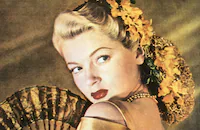
Lana Turner

Ray Milland

Tom Ewell

Louis Calhern

Ann Dvorak

Barry Sullivan
Margaret Phillips
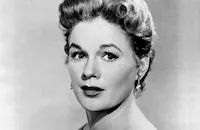
Jean Hagen

Phyllis Kirk

Sara Haden
Hermes Pan
Bethe Douglas
Roberta Johnson
Alice Wallace
Bunny Waters
Pat Davies
Dorothy Abbott

Bridget Carr
Charlene Hardey
Marlene Hoyt
Hilda Plowright
Louis Mason
Florence Cunningham
Elizabeth Flournoy
Georgia Pelham
Elaine Edwards
Helen Eby-rock
Margie Liszt
Donia Bussey
Betty Jane Howarth
Sue Carlton
John Crawford
David Bond

Dorothy Tree
Ann Robin
Pat Hall

Geraldine Wall
Robert Emmett Keane

Richard Anderson
Sally Cooper
Chris Olson
Wilson Wood
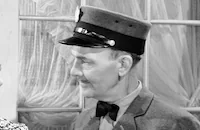
John Butler
Lurene Tuttle
Maura Murphy
Ann Hunter
Madge Blake
Marjorie Wood
Gilbert Herman
Joe Bautista
David Hydes
Percy Helton
Tommy Bernard
Myron Welton
Sarah Padden
Betty Seland

Kathleen Freeman
Gertrude Graner
Carol West
Clifford Brooke

Whit Bissell
Harry Barris
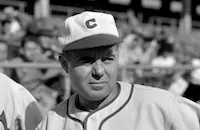
Ray Walker
Keith Mcconnell
Michael Dugan
Ken Duncan
James Cross
Ruthelma Stevens
Claude Stroud
Marlo Dwyer
James Horne
William Cabanne
Major Sam Harris
John Albright
Mickey Martin
Johnny Walsh
John Maxwell
Glen Gregory

Frankie Darro
Andre Charise
Bob Cautiero
George Dee
Daniel De Jonghe
Diantha Pattison
Janet Fay
Claudette Thornton
Bert Keyes
Barbara Darrow
Alice Darrow
Bobbie Stebbins
Lyle Clark

Queenie Leonard
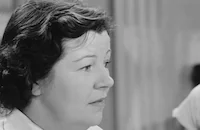
Margaret Bert
Joan Valerie
Kerry O'day
Carol Webster
Beverly Thompson
Lee Lynn
Meredith Leeds

Beverly Campbell
Sue Casey
Kenneth Garcia
Arthur Loew Jr.

Peter Thompson
Walter Mcgrail
Paul Kramer
Victor Cutler
Harry Ellerbe
Frank Gerstle
Crew
Peter Ballbusch
George Folsey
Cedric Gibbons
Henry W. Grace
Johnny Green
Jack Greenwood
Sydney Guilaroff
Liz Hanson
Bronislau Kaper
Howard Koch
Isobel Lennart
Arthur Lonergan
Helen Rose
Douglas Shearer
William J. Tuttle
Voldemar Vetluguin
George White
Edwin B. Willis

Photo Collections
Videos
Movie Clip



Trailer
Film Details
Technical Specs

Articles
A Life of Her Own
Corey knew, as did anyone who followed Hollywood gossip, that Turner was widely believed to have had an affair with Barbara Stanwyck's husband, Robert Taylor. Turner always denied it, and in any event she was not amused by Corey's sarcasm. She stormed to her dressing room like a diva, refusing to return until Corey's role was recast. This was a showdown she won - Corey was soon off the set. When the studio suggested Ray Milland to replace him, Turner replied, "He'd be great. You should have hired him in the first place." With MGM committed to A Life of Her Own and having already spent quite a bit of money on it, Milland's agent was able to negotiate an enormous salary - $175,000. By contrast, Corey had received $75,000. Turner would later write, "But if the studio paid through the nose, so did I. They got their revenge through the scripts I got stuck with next."
A Life of Her Own was Turner's comeback film after a two-year suspension from MGM. She'd been suspended for refusing to take a non-starring part in The Three Musketeers (1948), a part she eventually did play. During the suspension, she married her third husband, millionaire Bob Topping, and traveled abroad. For her return to the screen, MGM considered several properties (including Madame Bovary) before picking Rebecca West's novel The Abiding Vision, which they turned into A Life of Her Own. Turner's character is a model named Lily James, who leaves small-town Kansas for New York City filled with anxiety and determination. "I've had men buzzing around me since I was fourteen years old," she tells the head of a Manhattan modeling agency. "I want to be somebody. All I have is myself and how I look. I'll work hard." The agency takes her on and she does indeed work hard, making it to the top but also embarking on an ill-fated romance with a married man (Milland).
A Life of Her Own was beset with problems from the early stages. Censorship issues pertaining to the theme of adultery interfered to such an extent that little of the original novel remained. Director George Cukor found the resulting screenplay's treatment of adultery so doleful and ponderous that he joked, "With this picture, we will probably succeed in ending adultery forever." The ending was also a problem, and writers Donald Ogden Stewart and Samson Raphaelson were brought in to fix it, uncredited. The original script ended with Turner reduced to working as a maid in a New York hotel. That was changed to having Turner commit suicide, as Ann Dvorak's character had done earlier in the story. Test audiences hated this, and the existing, more upbeat ending was finally written and filmed.
Cukor never cared much for A Life of Her Own. As he later recalled, "I resisted [Dore] Schary's effort to get me to take the assignment, but since I owed the studio a picture, in the end I could not in good conscience turn it down. But it was the last picture I ever directed that I did not personally want to make." Cukor's objection was with the storyline, which he found "silly and fatuous." Ever the pro, he fashioned a mature movie out if it all the same.
Ann Dvorak practically steals the show as an aging model who has made some poor choices with her life. The veteran actress was nearing retirement from the screen after a career that began in 1929 and included such gems as Scarface (1932) and 'G' Men (1935). Look for famed choreographer Hermes Pan dancing with Lana Turner during a party sequence.
Producer: Voldemar Vetluguin
Director: George Cukor
Screenplay: Isobel Lennart
Cinematography: George Folsey
Film Editing: George White
Art Direction: Cedric Gibbons, Arthur Lonergan
Music: Bronislau Kaper
Cast: Lana Turner (Lily Brannel James), Ray Milland (Steve Harleigh), Tom Ewell (Tom Caraway), Louis Calhern (Jim Leversoe), Ann Dvorak (Mary Ashlon), Barry Sullivan (Lee Gorrance).
BW-109m. Closed captioning.
by Jeremy Arnold

A Life of Her Own
Quotes
Trivia
Notes
The working title of this film was The Abiding Vision. Pre-production news items in Daily Variety indicate that M-G-M first assigned Vincente Minnelli to direct the film, and that numerous script revisions and casting difficulties delayed the start of production by several months. The film marked Lana Turner's return to the screen after a two-year absence from motion pictures. According to September 1949 news items in Daily Variety, Turner, who initially refused to star in the film and did not show up for her first wardrobe fittings, was forced to accept the assignment by studio heads Louis B. Mayer and Dore Schary.
Contemporary news items in Daily Variety relate the following information concerning the production: Howard Keel, Cary Grant, George Murphy, James Craig, James Mason and Robert Ryan were, at various times, considered for the male lead opposite Turner. M-G-M then borrowed Wendell Corey from Hal Wallis Productions for the role, and he worked on the production through mid-February 1950, when M-G-M replaced him with Ray Milland. Daily Variety reported that Corey had asked to be relieved from his assignment because he felt that he "wasn't right for the role." Milland was borrowed from Paramount and was paid a reported $50,000 for his work.
The film marked the motion picture debuts of Margaret Phillips, a stage actress, and Sally Cooper, the daughter of British actress Dame Gladys Cooper, whose next film, Joan of Arc, opened the day after this one. March 1950 Daily Variety news items list Tommy Gardner and Pat Dane in the cast but their appearance in the final film has not been confirmed. Tom Seidel, who played Jean Hagen's husband in the film, was also her husband in real life. Liz Hanson, who acted as technical advisor on the fashion modeling sequences, was the Western fashion editor for Vogue magazine. Some filming of exteriors took place in Calabasas, CA.
Information contained in the file on the film in the MPAA/PCA Collection at the AMPAS Library, reveals that an incomplete script of the film reviewed by the Breen Office in December 1949 was labeled "the most thoroughly unacceptable story" the agency had received in many months. The Breen Office termed the story "shocking and highly offensive" and condemned its portrayal of "adultery and commercialized prostitution." A revised version of the script submitted to the agency in late January 1950 elicted a similar response as well as a harsh criticism of the story's "insufficient compensating moral values." To bring the story into agreement with the Production Code, the Breen Office insisted that M-G-M "show that the adulterous situation is wrong and that sinners must be punished for their sin." In February 1950, the Breen Office suggested the deletion of scenes involving any physical contact between "Lily Brannel James" and "Steve Harleigh," and the inclusion of a scene in which "Jim Leversoe" "dresses these people down for their sin."
In mid-March 1950, with production of the film nearly completed, M-G-M was ordered by the Breen Office to rewrite the last portion of the picture and remove the "air of triumph" suggested by Lily and Steve's tender farewell. Modern sources note that the original filmed ending had "Lily" committing suicide by leaping from her New York City hotel room. That ending was discarded in favor of a happier ending, in which she considers suicide but decides not to jump.
Modern sources also note that writers Samson Raphaelson and Donald Ogden Stewart worked on the screenplay at various times during development, and that Corey was dismissed by the studio at the request of Turner and director George Cukor following a feud between Turner and Corey that stemmed from an insulting remark that Corey was said to have made to Turner on the set. A biography of Cukor notes that the running time of the film was trimmed from 150 to 108 minutes, and that Cukor disliked the completed picture and disapproved of the studio's decision to change the ending.















